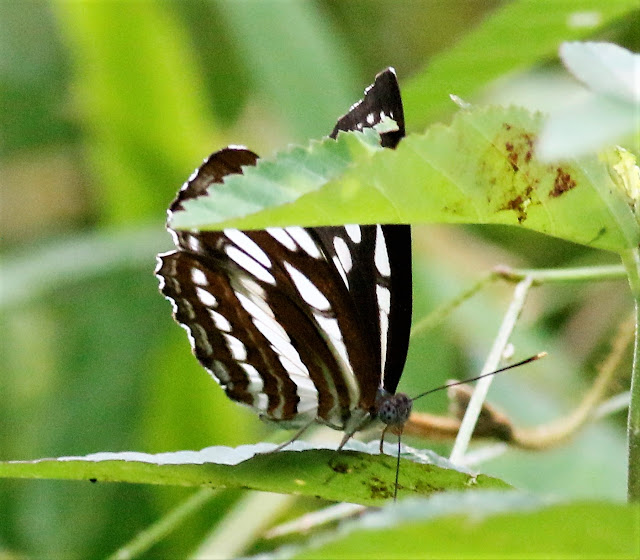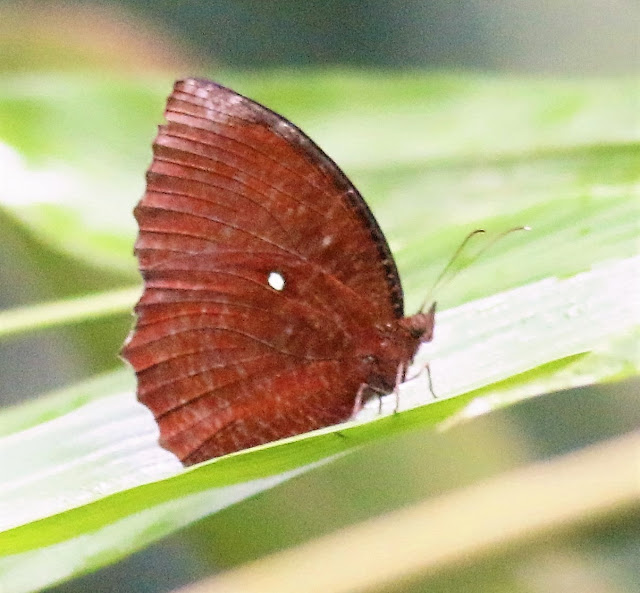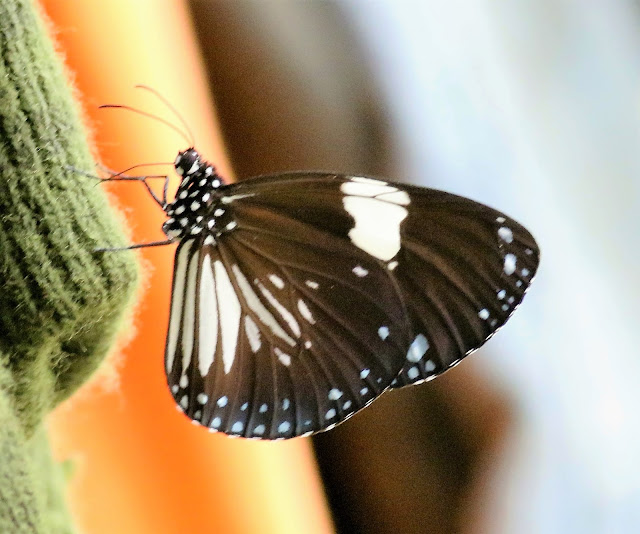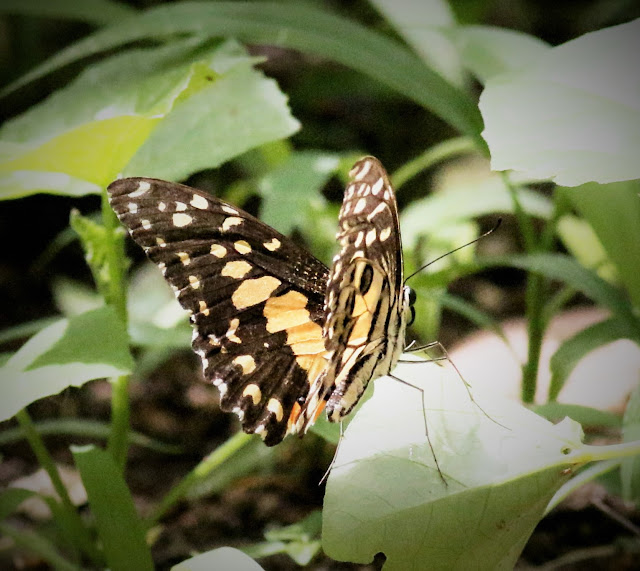There are higher possibilities that you can find some butterflies in the afternoon rather than birds. While the birds are usually inactive in the afternoon, the butterflies and skippers will be busy looking for nectar despite the humid temperature.
Here are some photos of them in the mid afternoon.
 |
| Fulvous Pied Flat (Pseudocoladenia dan) |
At just 1.5 cm this skipper is really small. It usually prefers to keep very low in the foliage as i have observed. Fortunately it is still very common i.e at least in this area of observation.
 |
| Chocolate Demon (Ancistroides nigrita) |
This skipper is slightly larger at 2.3cm as compared to the earlier one. However unlike the skipper above, this one has a rather dull appearance.
 |
| Common Banded Demon (Notocrypta paralysos) |
Another demon at large.
This one looks like it was wearing a shade in the bright afternoon.
Another Common Banded Demon
 |
| Malayan Sailer (Neptis duryodana) |
How did i know that it was a 'Malayan Sailer' instead of a 'Common Sailer'? Have a look at the photos below of the same butterfly.
Kirton (2014) described a 'Malayan Sailer' as having more brown on its underside as compared to orange-brown of a 'Common Sailer'.
 |
| Common 5-Ring (Ypthima baldus) |
Not sure which is more common - Common 3-Ring or Common 5-Ring?
 |
| Malayan Wanderer (Pareronia valeria) |
Ladies and Gentlemen, the above butterfly was a female 'Malayan Wanderer' which Kirton (2014) described as rare in this region. SG had just celebrated their national day recently while Malaysia will celebrate their 60th soon i.e on 31st August. This butterfly is specially dedicated to this very special occasion
HAPPY WATCHING BUTTERFLIES !














































.JPG)